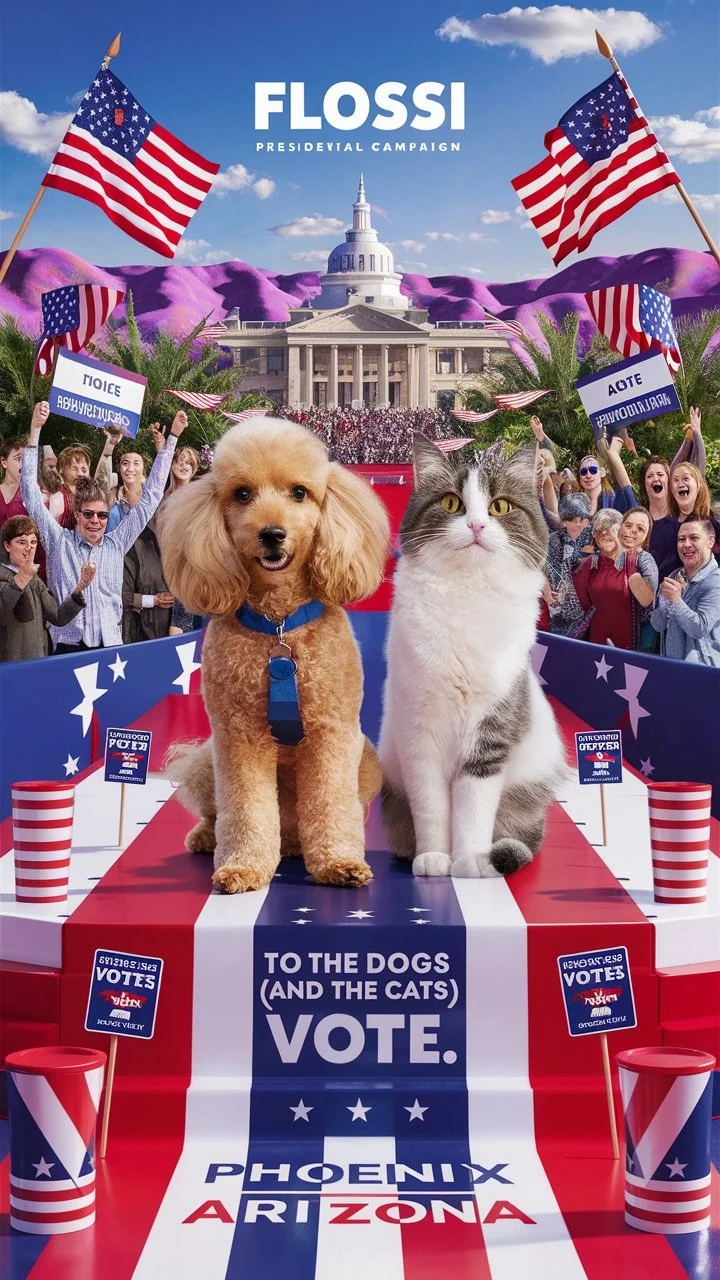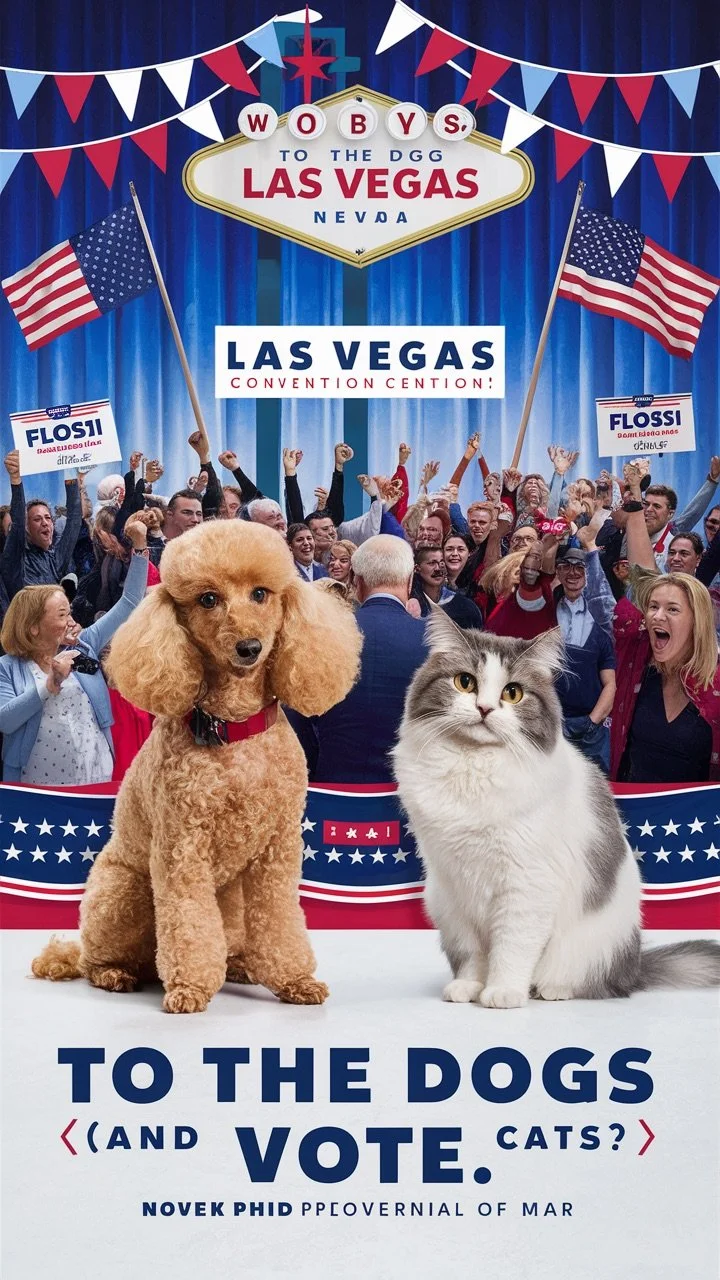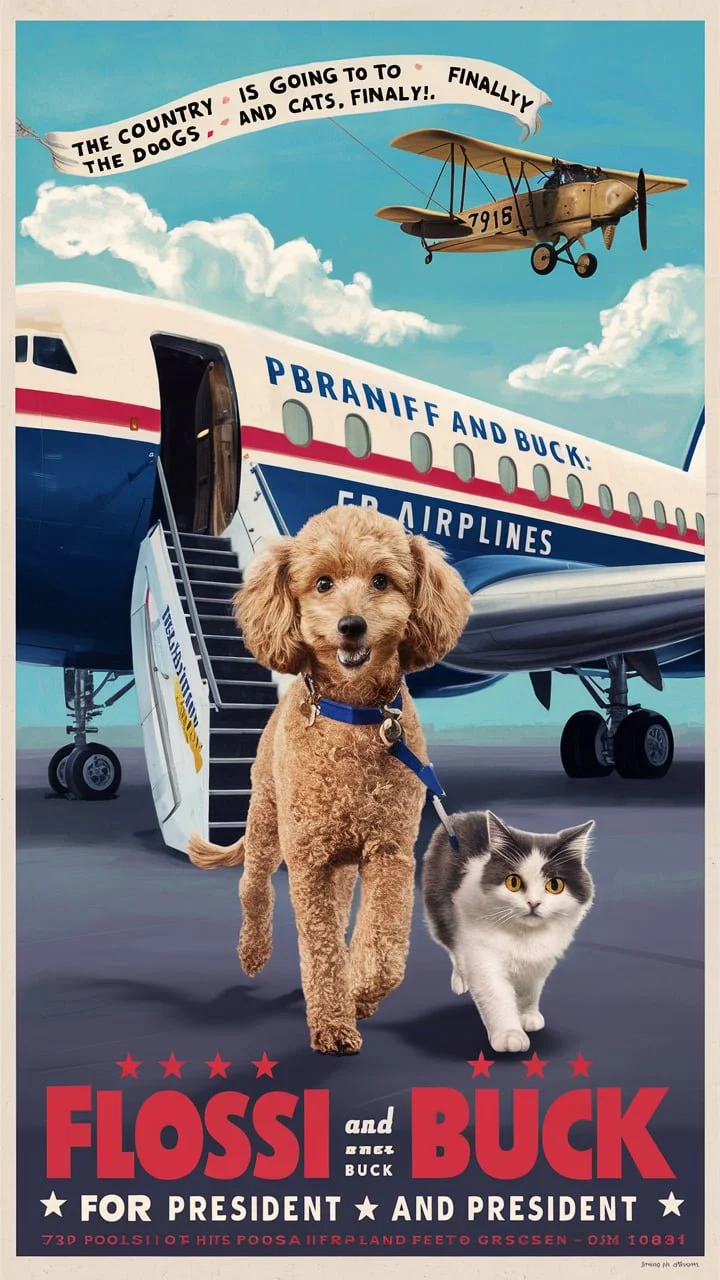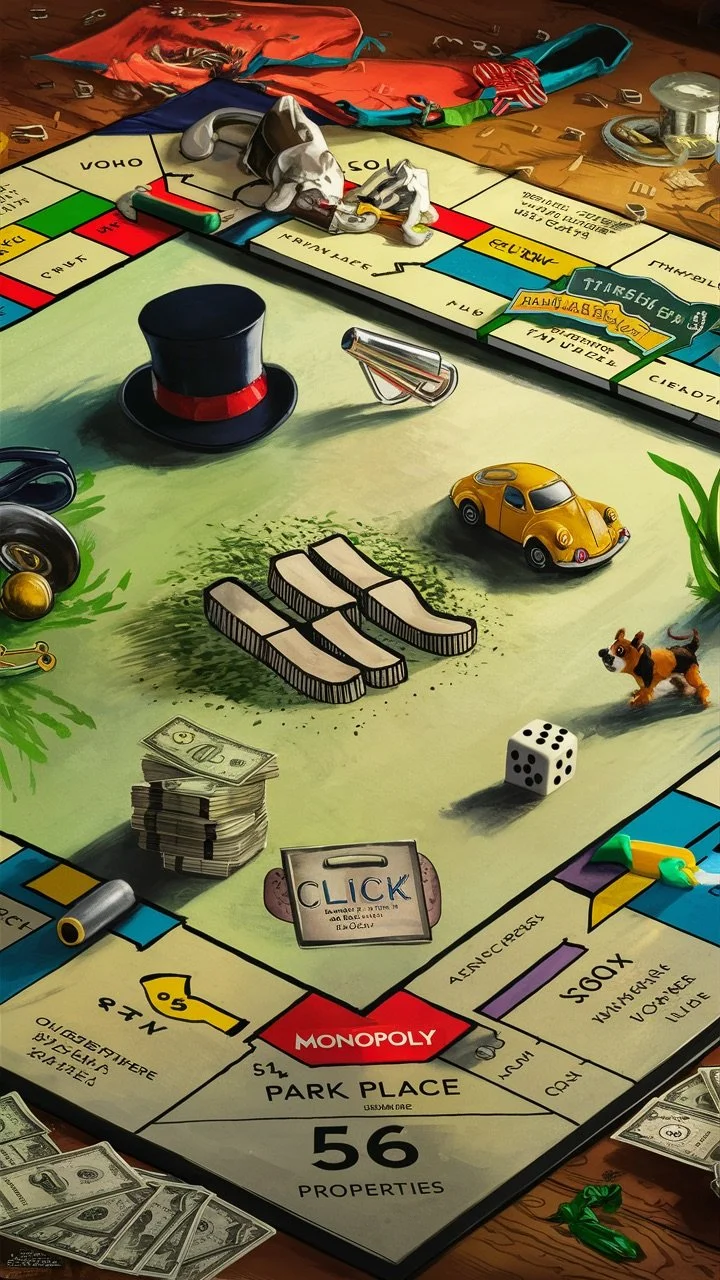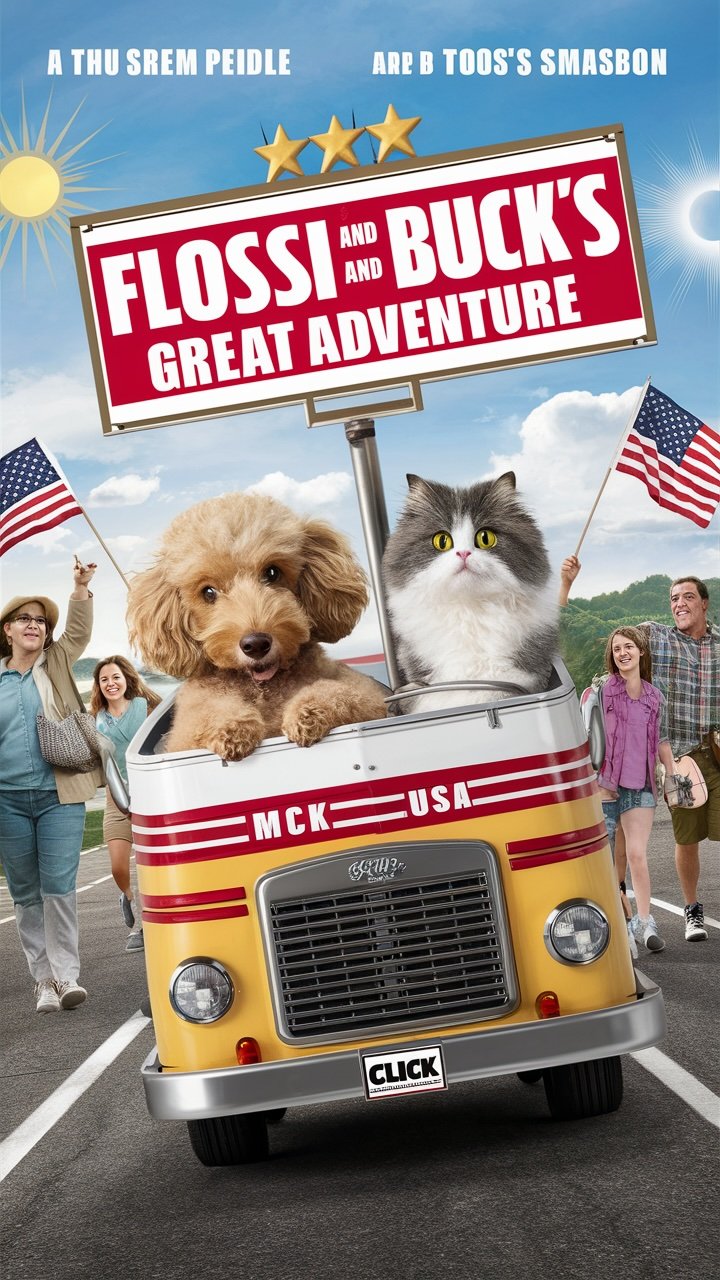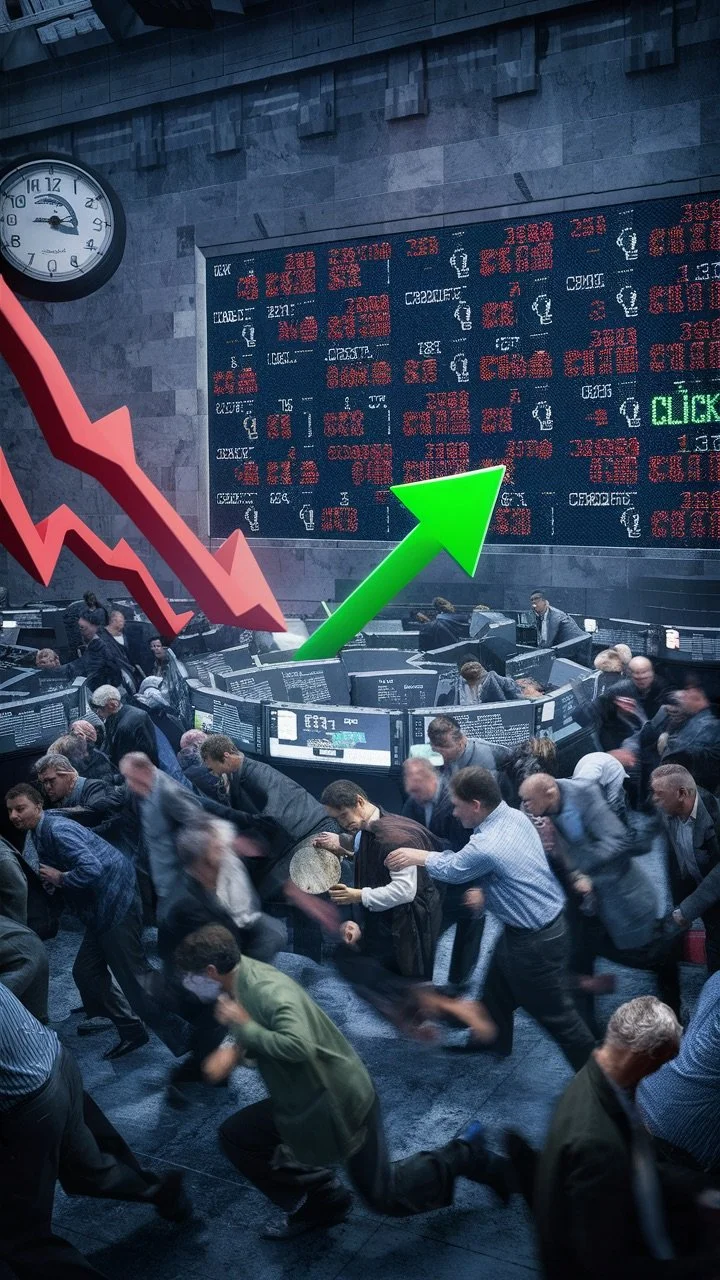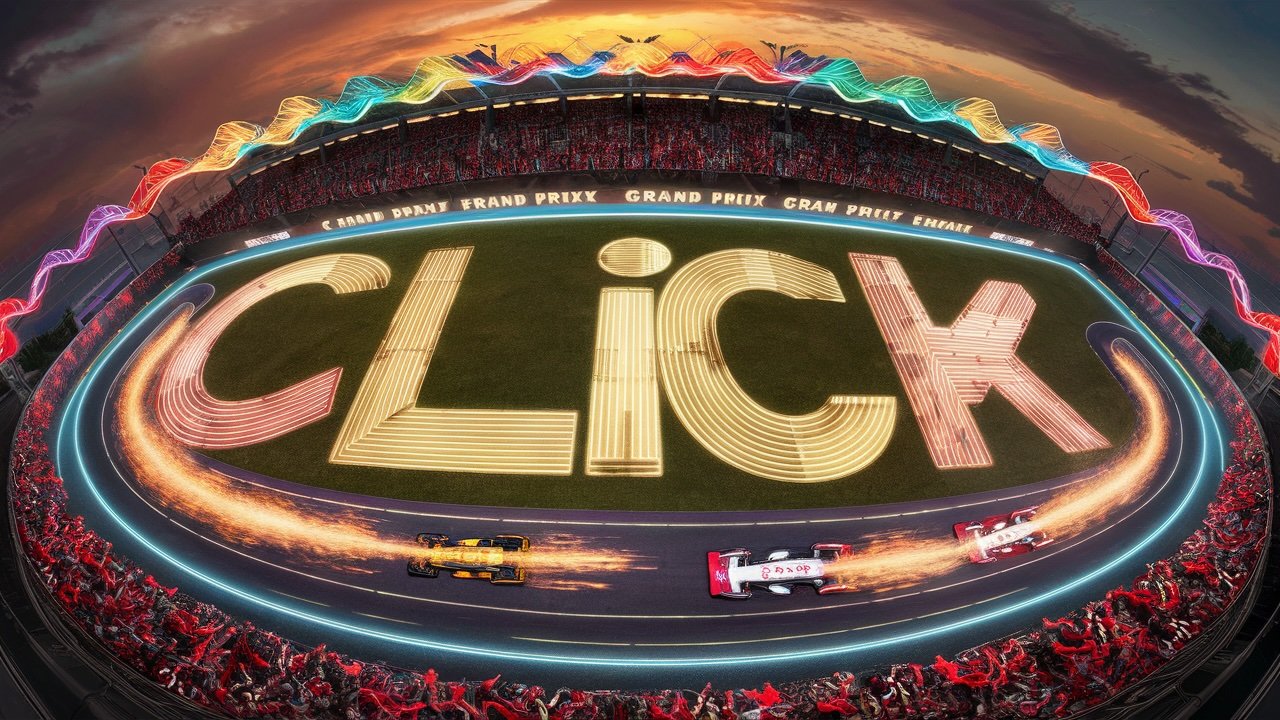Flossi & Buck: On the Road
Richard Nixon's snack of choice was cottage cheese. He was known for his fondness for this particular snack, often eating it with various toppings. One of the most famous combinations was cottage cheese with ketchup, which he reportedly enjoyed regularly. This unusual pairing became quite well-known and is often mentioned in discussions about presidential food preferences.
Harry Truman had a fondness for various straightforward, home-style foods, reflecting his Midwestern roots. One of his favourite snacks was a simple and classic option: nuts, particularly pecans.
Flossi & Buck: Bozeman, MT
Chico Hot Springs, located near Pray, Montana, in the heart of Paradise Valley and about 30 miles north of Yellowstone National Park, has a rich history that dates back to the late 19th century. Here is a detailed history of Chico Hot Springs:
Early History
- Discovery of Hot Springs: The natural hot springs in the area were known to Native American tribes long before European settlers arrived. They were valued for their therapeutic properties.
Establishment
- Founders: In 1900, Percie and Bill Knowles established Chico Warm Springs Hotel and Hospital. Percie Knowles, who had a background in nursing, saw the potential of the hot springs for their medicinal properties.
- Opening: The hotel officially opened its doors on June 20, 1900. It initially served as a health resort, attracting visitors seeking relief from ailments through the hot springs' mineral waters.
Development
- Early 1900s: The resort quickly gained popularity, and the Knowles expanded the facilities to include more guest rooms, a hospital wing, and additional amenities. It became a destination for people from all over the region.
- Prohibition Era: During Prohibition, Chico Hot Springscontinued to thrive, though, like many establishments of the time, it was rumoured to have been involved in the illicit sale of alcohol.
Mid-20th Century
- Decline and Renewal: By the mid-20th century, the resorthad begun to decline. However, it was purchased in 1973 by Mike and Eva Art, who initiated significant renovations and restorations, revitalising the resort and preserving its historical charm.
Modern Era
- Expansion and Renovation: Under the ownership of the Art family, Chico Hot Springs underwent extensive renovations and expansions. New facilities, such as additional guest accommodations, conference spaces, and a full-service spa, were added.
- Current Status: Today, Chico Hot Springs is a thriving resort that offers a blend of historical charm and modern amenities. It features multiple lodging options, fine dining at the Chico Dining Room, a saloon, outdoor adventure activities, and, of course, the hot springs pools that continue to draw visitors for their relaxing and healing properties.
Flossi & Buck: Phoenix, AZ
The founding of Phoenix, Arizona, can be attributed to several key individuals and historical events:
Early Inhabitants
- Hohokam People: Long before European settlers arrived, the Hohokam people inhabited the area that is now Phoenix. They constructed extensive irrigation canals, some of which are still in use today, laying the groundwork for future agricultural development.
Modern Founding
- Jack Swilling: Jack Swilling, a Confederate veteran, is often credited with the founding of modern Phoenix. In 1867, while traveling through the Salt River Valley, Swilling recognized the potential for farming in the area if the ancient Hohokam canals could be re-excavated and used for irrigation.
- Swilling Irrigation and Canal Company: Swilling formed the Swilling Irrigation and Canal Company in 1868, which began the work of constructing canals to bring water from the Salt River to the surrounding land.
- Settlement: The establishment of the canal system led to the formation of a small farming community. This community eventually grew and became known as Phoenix.
Naming and Development
- Darryl Duppa: The name "Phoenix" was suggested by Darryl Duppa, an educated Englishman who saw the new settlement as a city rising from the ruins of the ancient Hohokam civilization, much like the mythical Phoenix bird rises from its ashes.
- Official Recognition: Phoenix was officially recognized and incorporated as a town on May 4, 1868. It became the territorial capital in 1889 and was later designated as the state capital when Arizona achieved statehood in 1912.
Key Developments
- Railroad and Infrastructure: The arrival of the railroad in the 1880s was crucial for Phoenix's growth, facilitating the transportation of goods and people to and from the area.
Agriculture and Economy: The establishment of reliable irrigation systems allowed for the development of a strong agricultural economy, which supported the city's early growth.
In summary, while the early foundations laid by the Hohokam people were critical, it was Jack Swilling's vision and efforts in the 1860s that led to Phoenix's modern founding. The contributions of other settlers and the subsequent development of infrastructure and agriculture helped shape Phoenix into the city it is today.
Flossi & Buck: Las Vegas, NV
The development of Las Vegas into the city we know today results from contributions from multiple individuals and events over time. Here are some key figures and milestones:
Early Settlement and Foundation
- Rafael Rivera: A Mexican scout who is credited with being the first non-Native American to set foot in the Las Vegas Valley in 1829. He discovered the area while scouting for the Old Spanish Trail.
- John C. Fremont: An explorer who led an expedition through the area in 1844, mapping the region and promoting the value of the Las Vegas Springs as a water source.
Establishment of Las Vegas
- Mormon Missionaries: In 1855, Mormon missionaries established a fort in Las Vegas, intended to be a midway point for travellers between Salt Lake City and Los Angeles. This fort, known as the Old Mormon Fort, marked the first permanent settlement in the area.
Railroad Era
- William A. Clark: A significant figure in the development of Las Vegas was Montana Senator William A. Clark. In 1905, Clark's railroad company auctioned off land, leading to the establishment of the town of Las Vegas. Completing the San Pedro, Los Angeles, and Salt Lake Railroad, which connected Salt Lake City to Los Angeles, made Las Vegas a critical stop and contributed to its growth.
Development of the Modern Las Vegas Strip
- Thomas Hull: Opened the El Rancho Vegas in 1941, the first resort on the Las Vegas Strip. This marked the beginning of the development of large casino resorts.
- Benjamin "Bugsy" Siegel: A key figure in the creation of the modern Las Vegas Strip, Siegel was involved in developing the Flamingo Hotel, which opened in 1946. Though his involvement was marked by controversy and his life ended in violence, the Flamingo's success paved the way for future luxurious casinos and resorts.
Post-War Boom
- Howard Hughes: A reclusive billionaire and influential figure in Las Vegas's transformation during the 1960s and 1970s. Hughes invested heavily in Las Vegas real estate and casinos, helping to legitimise the city and reduce the influence of organised crime.
Flossi & Buck: The Campaign Trail
During the 1932 presidential campaign, Franklin D. Roosevelt used a Ford Trimotor airplane, a popular aircraft of the time known for its reliability and capacity to carry multiple passengers. The Ford Trimotor, often refe “Tin Goose," was an all-metal, high-wing monoplane that could carry 8-12 passengers and had a cruising speed of approximately 107 mph (172 km/h).
Details About One of His Airplane Trips in 1932
Flight from Albany to Chicago
Date: July 2, 1932
Purpose: To accept the Democratic presidential nomination at the Democratic National Convention.
Departure: Roosevelt departed from Albany, New York, where he was serving as the governor.
Aircraft: Ford Trimotor
Significance: This trip marked a significant moment in political history as it was one of the first times a presidential candidate used an airplane to travel for campaign purposes. Roosevelt's decision to fly was a strategic move to demonstrate his embrace of modern technology and his dynamic approach to leadership.
Reception: Upon his arrival in Chicago, Roosevelt was met with enthusiasm and fanfare, which was enhanced by the novelty of his mode of transportation. His use of the airplane was covered extensively by the media, adding to the excitement of his campaign.
Flossi & Buck: Bipartisan Treats
Location:Pathmark Supermarket in Cherry Hill, New Jersey
Date: May 1976
Activities: During his visit to the Pathmark Supermarket in Cherry Hill, New Jersey, President Gerald Ford toured the store, interacted with shoppers, and spoke with employees. He took the opportunity to discuss economic policies, food prices, and the cost of living, which were critical issues for many voters at the time.
Location: Bohack Supermarket, Brooklyn, New York
Date: 1965, during the mayoral campaign
Touring the Store: Mayoral Candidate John Lindsay walked through the aisles of the Bohack supermarket, interacting with shoppers and employees. He used this opportunity to hear firsthand the issues consumers wanted to discuss, particularly food prices and availability.
One notable instance of his supermarket campaigning occurred on September 15, 1965. On this date, Lindsay visited the Grand Union supermarket in Queens. This visit was part of his broader strategy to connect with everyday New Yorkers by engaging with them in familiar settings like supermarkets.
Flossi & Buck: Eau Claire, WI
Eau Claire, Wisconsin, is often called the "City of Bridges" due to its numerous bridges spanning the rivers and streams that traverse the city. Here are a few reasons why this nickname is fitting:
1. Geographical Features
- Confluence of Rivers: Eau Claire is situated at the confluence of the Chippewa and Eau Claire Rivers. This natural feature necessitates multiple bridges to connect different parts of the city.
- Numerous Waterways: Besides the main rivers, the city has several smaller streams and creeks that require bridging.
2. Historical and Modern Bridges
- Variety of Bridges: Eau Claire boasts a wide variety of bridges, ranging from historic to modern, including pedestrian, vehicular, and rail bridges. These bridges are crucial for transportation and connectivity within the city.
- Architectural Diversity: The bridges in Eau Claire showcase diverse architectural styles and engineering techniques, reflecting different periods in the city's development.
3. Cultural and Economic Significance
- Symbol of Connectivity: The bridges symbolise the city's connectivity and community spirit, linking various neighbourhoods, parks, and business districts.
- Tourist Attraction: The picturesque bridges, especially those with historical significance, attract tourists and contribute to the city's charm and appeal.
4. Prominent Bridges
- Phoenix Park Bridge: This notable pedestrian bridge connects Phoenix Park to the downtown area and provides scenic views of the Chippewa River.
- High Bridge: This historic railroad bridge has been converted into a pedestrian bridge, offering a unique city perspective.
- Grand Avenue Bridge: A vital vehicular bridge connecting major parts of the city. The combination of natural waterways and the city's development around them has led to the construction of numerous bridges, earning Eau Claire its nickname as the "City of Bridges."
Japan 9 August 1945
Between the dropping of the first atomic bomb on Hiroshima on August 6, 1945, and the second on Nagasaki on August 9, 1945, Japan experienced significant political and military turmoil. Here's a detailed overview of the key events and developments during this period:
August 6, 1945: Hiroshima Bombing
- Bombing of Hiroshima: The United States dropped an atomic bomb, codenamed "Little Boy," on Hiroshima.
Immediate Aftermath in Japan
- Shock and Confusion: The scale of the destruction and the nature of the weapon shocked Japanese leaders. There was initial confusion about the cause of the devastation.
- Military Response: Despite the devastation, many in the Japanese military were initially unwilling to surrender. They believed they could still defend the homeland and force better surrender terms.
August 7-8, 1945: Internal Debate and Soviet Declaration of War
- Government and Military Deliberations: Japanese leaders, including the Supreme Council for the Direction of the War (also known as the "Big Six"), debated their options. The council was divided between those who wanted to seek peace and those who wanted to continue fighting.
- Soviet Declaration of War: On August 8, 1945, the Soviet Union declared war on Japan, launching a massive invasion of Japanese-held territories in Manchuria (Operation August Storm). This further complicated Japan's strategic situation and added pressure to surrender.
August 9, 1945: Nagasaki Bombing and Political Crisis
- Bombing of Nagasaki: On the morning of August 9, the United States dropped the second atomic bomb, codenamed "Fat Man," on Nagasaki.
- Imperial Conference: On the same day, an Imperial Conference was convened to discuss Japan's next steps. Emperor Hirohito played a crucial role in this meeting.
Key Developments in the Imperial Conference
- Emperor's Intervention: Faced with the dual shocks of the atomic bombings and the Soviet invasion, Emperor Hirohito broke the deadlock among the council members. He expressed his desire to end the war, which was a significant and rare intervention in military and political affairs.
- Decision to Surrender: Following the Emperor's intervention, the Japanese government began drafting the terms of surrender. However, there were still factions within the military that resisted the idea of unconditional surrender.
August 10-14, 1945: Final Steps Toward Surrender
- Communications with Allies: Japan communicated with the Allies, indicating their willingness to accept the terms of the Potsdam Declaration, with the condition that the Emperor's status be preserved.
- Allied Response: The Allies responded, clarifying that the Emperor would be subject to the authority of the Allied Supreme Commander but would not be removed.
- Internal Conflict: There was continued internal conflict, with some military officers attempting a coup to prevent surrender but ultimately failed.
Japan formally surrendreed on August 15, 1945.
Pass Click
The game Monopoly has a complex history involving multiple individuals. The widely accepted story credits Charles Darrow with the invention of Monopoly, but its true origins trace back to an earlier game called "The Landlord's Game," created by Elizabeth Magie.
Elizabeth Magie and The Landlord's Game
- Creation: Elizabeth Magie, a progressive era feminist and game designer, created The Landlord's Game in 1904. She designed it to illustrate the negative aspects of concentrating land in private monopolies and to promote the economic theories of Henry George.
- Patent: Magie patented The Landlord's Game in 1904 and again in 1924 with updated rules.
Charles Darrow and Monopoly
- Development: Charles Darrow, an unemployed salesman, learned about The Landlord's Game through friends and modified it into what became Monopoly. He added elements like the iconic Atlantic City street names, houses, hotels, and the now-famous game board design.
- Commercialization: Darrow sold his version of the game to Parker Brothers in 1935, which then mass-produced and marketed Monopoly, leading to its widespread popularity.
Recognition and Legacy
- Parker Brothers: Upon discovering Magie's earlier patents, Parker Brothers bought the rights to The Landlord's Game and compensated Magie. They also published The Landlord's Game alongside Monopoly for a brief period.
- Cultural Impact: While Darrow is often credited with the invention of Monopoly due to his role in its commercial success, Elizabeth Magie's contribution as the original creator of the game's concept and mechanics is now widely recognized.
Click Campaign
Dr. Cyr often led conferences on how to meet the special needs of the country school, and it was at one such national get-together in 1939 that he earned his sobriquet.
At the time, three million American children were transported to classes. Districts used a variety of vehicles, including trucks and, in one case in Kansas, horse-drawn wheat wagons. Manufacturers showed little interest in making school buses because, since there were no nationwide standards, it was uneconomical to mass-produce them.
After studying the situation, Dr. Cyr summoned educators and administrators to meet with automotive engineers at Teachers College. The result was 44 national standards for various parts of the vehicle, from the doors to its dimensions.
Most of the specifications have since changed, but one constant remains: the yellow color with black lettering, a combination chosen to give buses maximum visibility at dawn and dusk.
Dr. Cyr also set up projects intended to improve education in small, remote districts and provide more subjects of instruction. In the 1950's, he experimented with teaching via telephone and helped establish an educational television system for the Catskills.
He was also an early advocate of creating national standards for curriculums, while keeping the authority to teach them at the local level. He encouraged community leadership and involvement in schools, and felt that rural students deserved an education as good as any.
Dr. Cyr's link to the American countryside dated to his boyhood. He was born on a farm near Franklin, Neb., attended a one-room school and remembered watching wagon trains moving across the Great Plains.
Click Crash
Behavioural finance issues related to loss primarily revolve around how individuals perceive and react to losses, often diverging from rational decision-making models. Some key issues include:
1. Loss Aversion
- Definition: The tendency for people to prefer avoiding losses rather than acquiring equivalent gains.
- Impact: Individuals might hold onto losing investments longer than is rational in the hope of breaking even, leading to greater losses.
2. Prospect Theory
- Definition: Developed by Daniel Kahneman and Amos Tversky, it describes how people choose between probabilistic alternatives that involve risk.
- Impact: People evaluate potential losses and gains relative to a reference point, usually the status quo and losses have a more significant emotional impact than gains of the same size.
3. Disposition Effect
- Definition: The tendency to sell winning investments too early and hold onto losing investments too long.
- Impact: Investors may realise gains quickly to lock in profits but avoid realising losses to escape the pain of admitting a bad investment decision.
4. Endowment Effect
- Definition: The phenomenon where people assign more value to things merely because they own them.
- Impact: This can lead to an irrational attachment to losing investments, making it difficult to sell them.
5. Mental Accounting
- Definition: People categorise and treat money differently depending on its origin, intended use, or other subjective criteria.
- Impact: Losses might be accounted for differently depending on the mental account they belong to, leading to inconsistent financial behaviour.
6. Regret Aversion
- Definition: The tendency to avoid making decisions that could lead to regret.
- Impact: Investors might avoid selling losing investments to avoid the regret of making a decision that results in a realised loss.
7. Overconfidence
- Definition: A cognitive bias where individuals overestimatetheir knowledge, abilities, and the accuracy of their predictions.
- Impact: Overconfident investors may underestimate the likelihood of losses or overestimate their ability to recover from losses, leading to riskier behaviour.
8. Sunk Cost Fallacy
- Definition: The inclination to continue an endeavour once an investment in money, effort, or time has been made.
- Impact: Investors might throw good money after bad, continuing to invest in a losing position due to the amount already invested rather than cutting their losses.
9. Anchoring
- Definition: The tendency to rely too heavily on the first piece of information encountered (the "anchor") when making decisions.
- Impact: Initial purchase prices can anchor investors' perceptions of value, causing them to hold onto losing investments until they return to the anchored value.
Flower Power
The floral industry in Colombia is a significant player in the global flower market, second only to the Netherlands. Colombia produces about 25% of the world's roses and a variety of other flowers, including carnations, chrysanthemums, and alstroemerias. The industry is a major exporter, with the United States being the largest market, followed by Canada, the Netherlands, and the United Kingdom. In 2021, flower exports from Colombia exceeded $1.5 billion, marking a substantial milestone for the industry.
Key Aspects of Colombia's Floral Industry:
Production and Export:
- Geographic Concentration: The majority of flower production occurs in the savanna region near Bogotá, with other significant areas including Antioquia and the Eje Cafetero. Colombia has over 10,000 hectares dedicated to flower cultivation.
- Export Volume: In 2022, Colombia exported flowers worth $2 billion, with the United States receiving the largest share. Other major destinations include Japan, Canada, the UK, and the Netherlands.
Cuble Click
There are several Python libraries and scripts available that can be used to solve the Rubik's Cube. One of the most popular libraries is the `kociemba` solver, which implements the Two-Phase Algorithm developed by Herbert Kociemba. This algorithm is known for its efficiency in solving the Rubik's Cube in a relatively small number of moves.
Here's a basic example of how you can use the `kociemba` library to solve a Rubik's Cube:
Step 1: Install the `kociemba` library
You can install the library using pip:
```sh
pip install kociemba
Step 2: Use the library in a Python script
Here's an example of how to use the `kociemba` library to solve a Rubik's Cube:
```python
import kociemba
Define the scrambled cube state as a string
The string represents the cube in the following order: U (up), R (right), F (front), D (down), L (left), B (back)
Each face is represented by 9 characters in row-major order, with colors represented by a single character
Example of a solved cube: 'UUUUUUUUURRRRRRRRRFFFFFFFFFDDDDDDDDDLLLLLLLLLBBBBBBBBB'
scrambled_cube = 'DURLBBURULDBBBFRRRDFDUFDFULUURLDDLFDBFLLDDLLRBFFLUBRB'
Solve the cube
solution = kociemba.solve(scrambled_cube)
Print the solution
print("Solution:", solution)
```
Explanation
1. Scrambled Cube String: The cube state is represented as a single string of 54 characters, each representing a color on the cube. The order of the characters is fixed as Up (U), Right (R), Front (F), Down (D), Left (L), and Back (B) faces, each represented in row-major order.
2. Solving the Cube: The `kociemba.solve` function takes the scrambled cube string and returns a solution in the form of a sequence of moves.
3. Solution Output: The solution is printed as a sequence of moves, where each move is a standard notation (e.g., U, R, F, D, L, B, and their respective counterclockwise and 180-degree variants).
Example of Scrambled and Solved States
- Scrambled State: 'DURLBBURULDBBBFRRRDFDUFDFULUURLDDLFDBFLLDDLLRBFFLUBRB'
- Solution: 'F2 L' U' B' R2 D L2 F' R D' B' F U' R' D2 B' F U' L D' R B2 L2 F2'
This is just one way to solve the Rubik's Cube using Python. There are other libraries and approaches, including more detailed simulation environments and more advanced algorithms, but `kociemba` is a good starting point due to its simplicity and effectiveness.
Amazing Click
Determining the most interesting maze can be subjective as it depends on individual preferences. However, some mazes are renowned for their complexity, historical significance, or unique design features. Here are a few notable examples:
1. Hampton Court Maze, England: This is one of the oldest surviving hedge mazes in the world, planted in the late 17th century. Its trapezoidal shape and winding paths make it a classic example of a historic maze.
2. Dole Plantation Maze, Hawaii: This pineapple garden maze is one of the world's largest, covering over three acres with 2.5 miles of paths. Its unique design features and tropical setting make it a popular tourist attraction.
3. Longleat Maze, England: Known as the longest hedge maze in the world, it has over 1.69 miles of pathways. The maze consists of over 16,000 English yew trees and includes several bridges, offering a different perspective of the maze from above.
4. Ashcombe Maze, Australia: This hedge maze is the oldest in Australia and features 1,000 cypress trees. Its circular design and beautifully manicured gardens add to its charm.
5. Andrássy Castle Maze, Hungary: This maze is located in the gardens of the Andrássy Castle and is known for its intricate layout and historical significance. It's a beautifully maintained hedge maze set in a picturesque landscape.
6. Mirror Labyrinth, Prague: Unlike traditional hedge mazes, this one is made of mirrors, creating a disorienting and intriguing experience. It combines elements of visual illusion and spatial confusion.
7. Villa Pisani Labyrinth, Italy: Located in the garden of a Venetian villa, this maze is known for its historical significance and complex layout. It includes a central tower, offering a reward for those who reach the middle.
Each of these mazes offers a unique experience, whether it's due to their size, design, historical context, or innovative elements.
The Last Straw
The environmental impact of producing paper straws is generally considered to be lower than that of plastic straws, but it still involves several factors that contribute to pollution and resource consumption. Here are some key points to consider:
Raw Materials and Production Process
1. Deforestation and Pulp Production:
- Paper straws are made from wood pulp, which requires cutting down trees. This can contribute to deforestation if not managed sustainably. The process of turning wood into pulp involves significant energy and water consumption.
- Pulp production can result in water pollution due to the chemicals used in processing, such as chlorine, which can lead to the release of harmful byproducts like dioxins.
2. Energy Consumption:
- The manufacturing process of paper straws involves multiple stages, including pulping, bleaching, and forming the straws. Each stage consumes energy, often derived from fossil fuels, contributing to greenhouse gas emissions.
3. Water Use:
- Large quantities of water are required in the paper production process. This can strain local water resources and result in wastewater that needs to be treated to prevent environmental contamination.
Pollution During Manufacturing
1. Air Emissions:
- The production of paper and paper products, including straws, releases air pollutants such as carbon dioxide (CO2), sulfur dioxide (SO2), and nitrogen oxides (NOx), contributing to air pollution and climate change.
2. Wastewater:
- The paper manufacturing process generates wastewater that contains various pollutants, including organic matter, chemicals, and suspended solids. Proper treatment of this wastewater is essential to minimize environmental impact.
End-of-Life Impact
1. Biodegradability:
- One of the main advantages of paper straws over plastic straws is their biodegradability. Paper straws decompose much faster than plastic straws, reducing their impact on marine and terrestrial ecosystems.
- However, if paper straws are coated with non-biodegradable materials (such as certain waxes or plastics), their environmental benefits can be diminished.
2. Recycling:
- While paper straws are technically recyclable, their small size and potential contamination from food and beverages often make them unsuitable for recycling. This can result in paper straws ending up in landfills or as litter.
Comparative Impact
1. Plastic vs. Paper:
- Paper straws generally have a lower overall environmental impact compared to plastic straws, especially in terms of marine pollution and biodegradability.
- However, the production of paper straws still involves resource consumption and pollution. It's important to consider sustainable sourcing and manufacturing practices to minimize their environmental footprint.
Click Candy Dish
Cooking food on the engine of a car, often referred to as "carbeque" or "manifold cooking," is a concept that has been explored by adventurous cooks and road trippers. It involves using the heat from a car engine to cook food while driving. This can indeed be done on various car engines, including those of a Porsche, but it requires careful preparation and consideration.
How It Works:
The basic idea is to use the heat generated by the engine to cook food wrapped in foil and placed in a location where the engine's heat can cook it evenly.
Steps to Cook Food on a Car Engine:
1. Preparation:
- Wrap the food securely in heavy-duty aluminum foil. Double wrapping is recommended to prevent leaks and ensure even cooking.
- Make sure the food is cut into smaller pieces for quicker and more even cooking.
2. Choosing the Location
- Identify the hot spots on your car engine. Typically, the exhaust manifold is a prime location due to its high temperature.
- Avoid placing food directly on moving parts or areas that could damage the foil or cause a fire.
3. Securing the Food:
- Use wire or other heat-resistant materials to secure the food package in place. Ensure it is tightly fastened to avoid movement while driving.
4. Driving Time:
- The cooking time will vary based on the type of food and the distance driven. For example, fish and vegetables might take 20-30 miles, while chicken or beef may take 50-100 miles.
- Check the food periodically (if safe to do so) to ensure it is cooking properly.
Safety Considerations:
- Heat and Flames: Always be cautious of potential fire hazards. Do not place food near flammable components.
- Food Safety: Ensure the food reaches the proper internal temperature to avoid foodborne illnesses.
- Vehicle Damage: Ensure the cooking setup does not interfere with the car's operation or cause damage to the engine components.
Practicality:
Cooking on a Porsche engine, given the performance and compact design of such engines, may present unique challenges. The high-performance nature and heat distribution of a Porsche engine might cook food faster, but it could also pose more significant risks if not done carefully.
Examples and References:
1. Manifold Destiny: A popular guidebook by Chris Maynard and Bill Scheller that details how to cook various dishes using the heat from a car engine.
Electrum Click
The world's oldest known gold coin is the Lydian stater, which dates back to around 600-550 BCE. These coins were produced in the ancient kingdom of Lydia, located in what is now modern-day Turkey. The Lydian stater is historically significant as it represents one of the earliest examples of coinage in human history.
Key Facts about the Lydian Stater:
Origin: The Lydian Kingdom, ruled by King Alyattes and later by his son Croesus.
Composition: The earliest Lydian staters were made from electrum, a naturally occurring alloy of gold and silver. Later, pure gold and pure silver coins were also minted.
Design: The design typically featured a lion's head or a bull on one side, and a simple punch mark on the other, which served as the hallmark of the mint.
Importance: The Lydian staters are significant because they represent a major innovation in the use of standardized, government-backed coinage for trade. This development greatly facilitated commerce by providing a reliable and widely accepted medium of exchange.
Crazy Clicked Out World
“The hardest thing to learn in life is which bridge to cross and which to burn.”
― Bertrand Russell
Click Grand Prix
The first automobile grand prix is widely recognized as the 1906 French Grand Prix, which was organized by the Automobile Club de France (ACF). This historic event took place on June 26-27, 1906, near Le Mans, France.
Key Details about the 1906 French Grand Prix:
1. Location: The race was held on public roads around the Sarthe region near Le Mans. The circuit was approximately 103 kilometers (64 miles) long.
2. Format: The race was run over two days, with six laps each day, making a total distance of about 1,238 kilometers (769 miles).
3. Participants: Thirty-two cars started the race, representing manufacturers from France, Italy, and Germany.
4. Winner: The race was won by Ferenc Szisz, a Hungarian driver, driving a Renault. He completed the race in a total time of just over 12 hours, averaging around 100 kilometers per hour (62 miles per hour).
5. Significance: This event marked the birth of organized grand prix racing, setting the stage for future automobile racing competitions. The term "grand prix" (meaning "grand prize" in French) became synonymous with major automobile races.
The 1906 French Grand Prix is celebrated for its significant role in the history of motor racing, influencing the development of racing formats and regulations in the years that followed.
Click Concert
The TV program Flipper originally aired in the United States from September 19, 1964, to April 15, 1967. It was broadcast on NBC and ran for three seasons, comprising 88 episodes.




